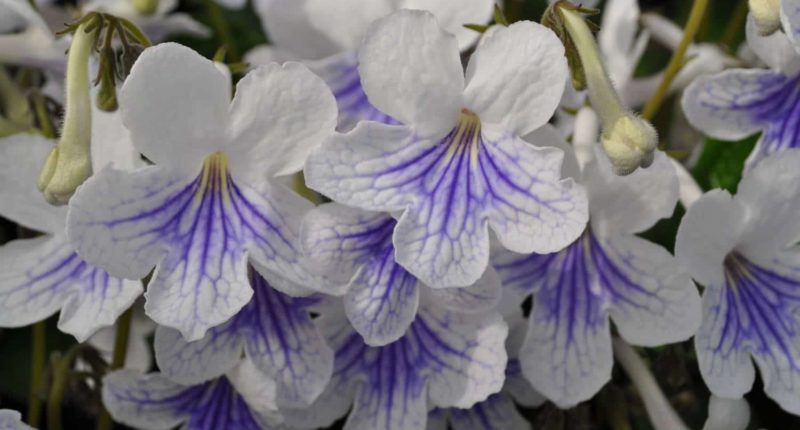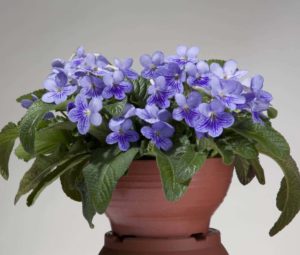
Tapping into the Interior Garden
Over the last couple of years, a focus has been put onto houseplants. The potted plant market has certainly been “buzz” worthy as breeders and growers alike look to energize what we consider an emerging market. Internally we see this interior garden model as a new market that has yet to be tapped. Interestingly enough, houseplants are into their third millennia of acceptance.
A BRIEF HISTORY
The first published record of potted plants in the home dates to 1,000 B.C. in China. The most well-known occurrence was the Hanging Gardens of Babylon dating to 600 B.C. So planning a potted plant program is not, tongue in cheek, reinventing the wheel. What has changed is the consumer’s idea of what is fashionable.
Just over 10 years ago, in 2011, the top-rated houseplants in North America were aloe, spider plants, pothos and sansevieria. While all are solid choices for endurance, all are also … less than imaginative. We are faced with a new market of consumers that have spent more time in their home than they have in the last several decades. Their desire for fresh choices, clean colors, textural elements and ease of care must be met with retail-ready solutions for the pending purchase impulse. In the same premise as the rich history of potted plants, let’s make the old new again.
REX BEGONIA
Rex begonia have been trending over the last few years. Traditionally a crop where stock was held in the individual’s greenhouse, advancements in commercial production have delivered consistent availability in virus-free clean stock by both cutting and tissue cultures. Being rhizomatous, rex begonia have the ability to store water for several weeks within their rhizome, allowing for ease of care both in the retail and in the end user’s home.
 The Green Fuse Rex program has been developed to decrease leaf mass to avoid cutting of the leaves. This attribute will greatly decrease loss from Botrytis-related issues. With four complete series in the aggressive Dibs, cut leaf Bewitched, “escargot” type swirl leaf in the Curly and well-rounded compact Shadow King, there is both a color and habit to fit your program.
The Green Fuse Rex program has been developed to decrease leaf mass to avoid cutting of the leaves. This attribute will greatly decrease loss from Botrytis-related issues. With four complete series in the aggressive Dibs, cut leaf Bewitched, “escargot” type swirl leaf in the Curly and well-rounded compact Shadow King, there is both a color and habit to fit your program.
Culture notes:
• Leaves will come with a ¼-inch stem. Stick all leaves facing the same direction. While they will touch, this will reduce the percentage of overlap and allow the media to absorb water instead of shedding off due to leaf mass. A good leaf-to-media connection is imperative for uniform rooting.
• Apply Pageant fungicide at 6-8 oz/100g day of sticking.
• Apply K-IBA foliar at 250 ppm. I recommend this application two times for the benefit of accumulation. This can be done on the same day (after drying) or day and day two.
• Root zone temperature needs to be maintained at 74 to 76° F.
• Relative humidity should be 70 to 75%. This may be achieved via tenting as well. Rex begonia are not responsive to heavy media saturation. Using a boom system is not a problem, but should be set to 50% of the saturation compared to traditional spring annuals.
• While supplemental lighting is not required on rex begonia, it is recommended to speed the rooting process. Day length extension of 16 hours should be considered.
• Roots will become visible in 15 to 18 days. At this time, the trays may be moved off mist, but should remain in high heat bench zone.
• Weekly applications of fungicide are recommended due to high relative humidity environment.
• The liners will be ready for transplant in eight to nine weeks from stick. They may be held in a cooler zone if needed. It is imperative to not allow actively rooting liners to drop below an average daily temperature of 56° F as this will stop root and vegetative development.
• Multiple growing points will develop after five weeks, with stem emergence after seven.

STREPTOCARPUS
Another houseplant selection that has undergone a reinvention is the streptocarpus. It was first documented for commercial use in England in 1818 by the Kew Gardens plant collector James Bowie. Native to South Africa, streptocarpus production had been similar to that of the rex begonia, with private stock that has often been questionable in cleanliness. Tissue culture production has been very successful in recent years allowing for uniform commercial production.
 Green Fuse Botanicals offers the Ladyslippers series in nine bright, floriferous colors. Being day length neutral, the Ladyslippers are able to be in flower year round. And, once initiated, they will bloom continuously regardless of light levels. I have several Ladyslippers in my home that have bloomed for years on end.
Green Fuse Botanicals offers the Ladyslippers series in nine bright, floriferous colors. Being day length neutral, the Ladyslippers are able to be in flower year round. And, once initiated, they will bloom continuously regardless of light levels. I have several Ladyslippers in my home that have bloomed for years on end.
Culture notes:
• Light recommendation is 1,000 to 1,500 foot-candles — slightly lower during summer conditions. The key is to keep leaf temperatures at minimum to prevent scalding or damage due to high leaf temperatures. Also, keep leaf temperature and irrigation water temperature differences at a minimum so not to damage leaf cells. Treat streptocarpus like African violets in management of light and temperatures. Subirrigation is best for watering during the winter months in order to keep cold water from leaves and yellowing from cold temperature on warm leaves.
• Maintain night temperatures at 65 to 68° F and day temperatures at 65 to 80° F. Warm day temperatures above 95° F will cause yellowing of foliage color and reduce flower size and longevity. Cooler temperatures will create a much longer growing period and other plant physiological troubles of roots and/or leaves.
• Fertilize with 100- to 125-ppm nitrogen using a balanced feed to maintain color of foliage. No ammonium feeds (Ca and K nitrate-based feeds are best) help eliminate stretch and poor growth under lower light conditions. Include micro element sources as part of fertilizer solution. Limiting the amount of feed applied will eliminate salt build-up and possible damage to roots. Maintain EC at approximately 0.8 to 1.0. A pH level of 6.0 is appropriate for streptocarpus.
• When transplanting, the top of the liner should not be buried below new soil level. If crown of plant is buried, plant growth will be slowed, delayed or crown will rot. If the top of the liner is planted too high, the finished plant may become floppy.
• To regulate growth, spray applications of Sumagic or B-Nine are effective without concern of stunted growth. Use at label rates.



 Video Library
Video Library 




















